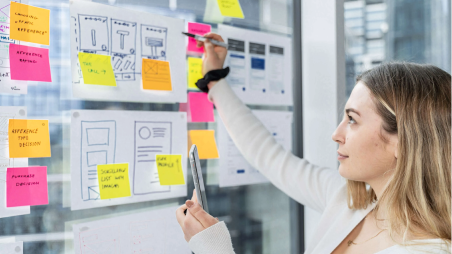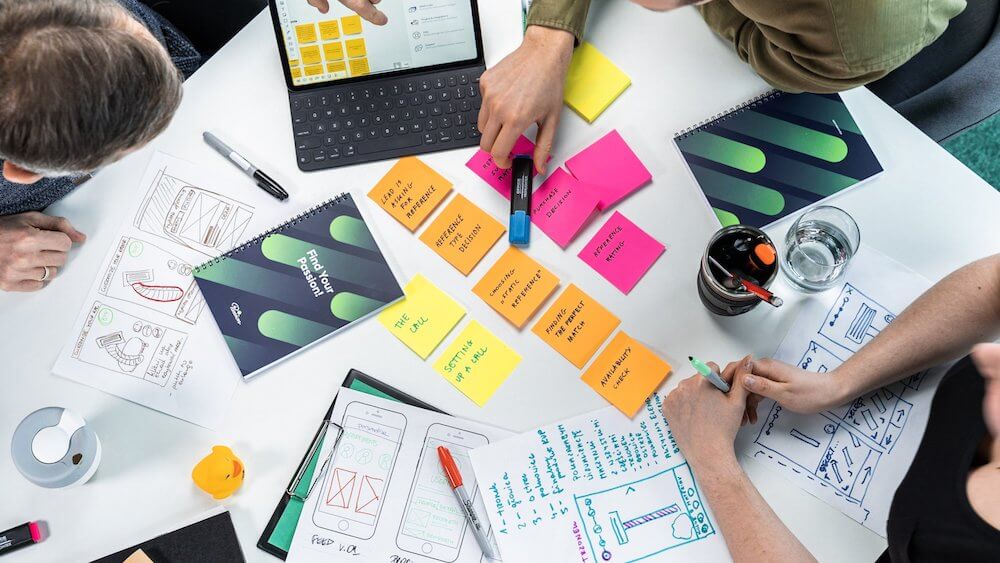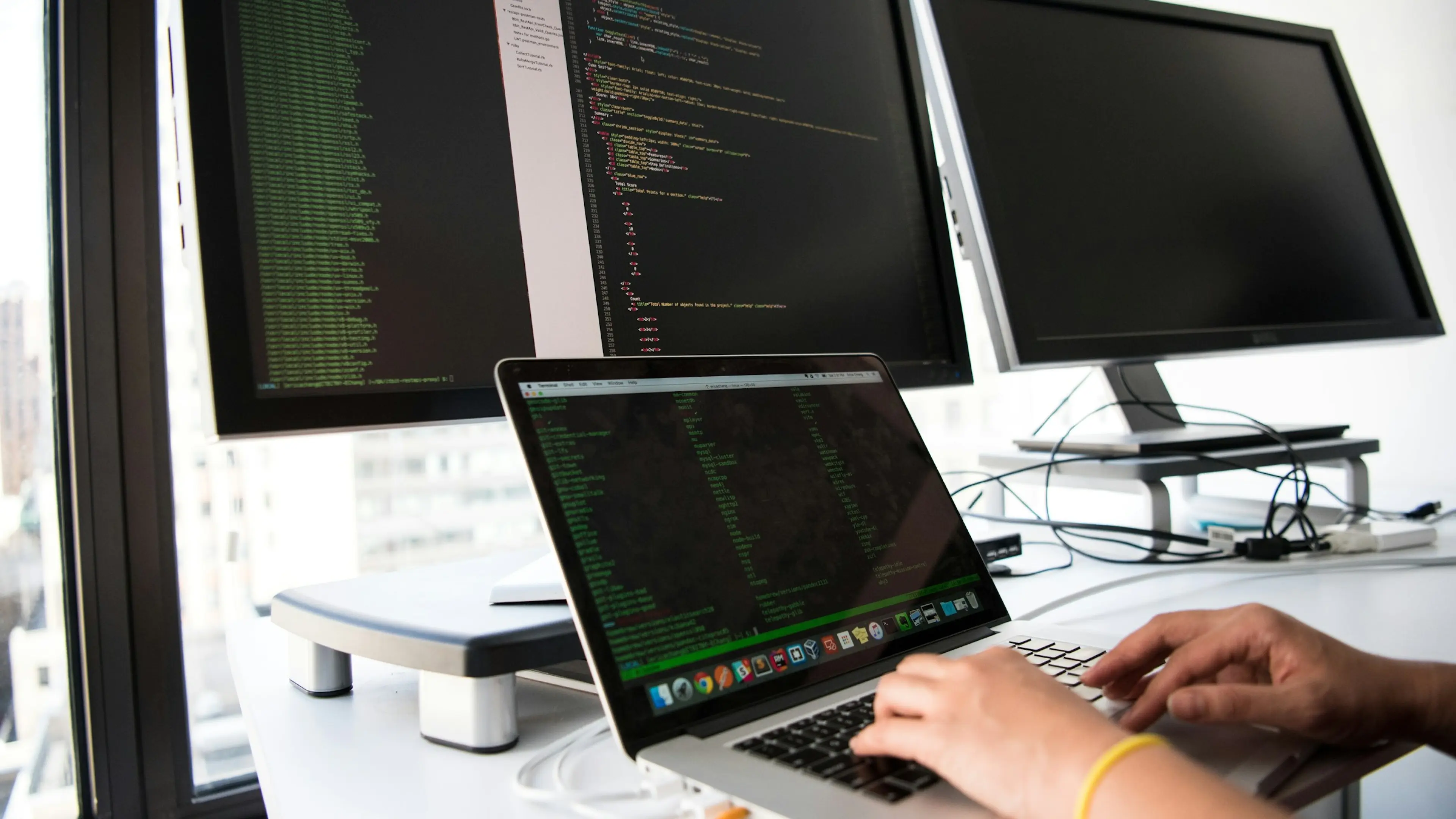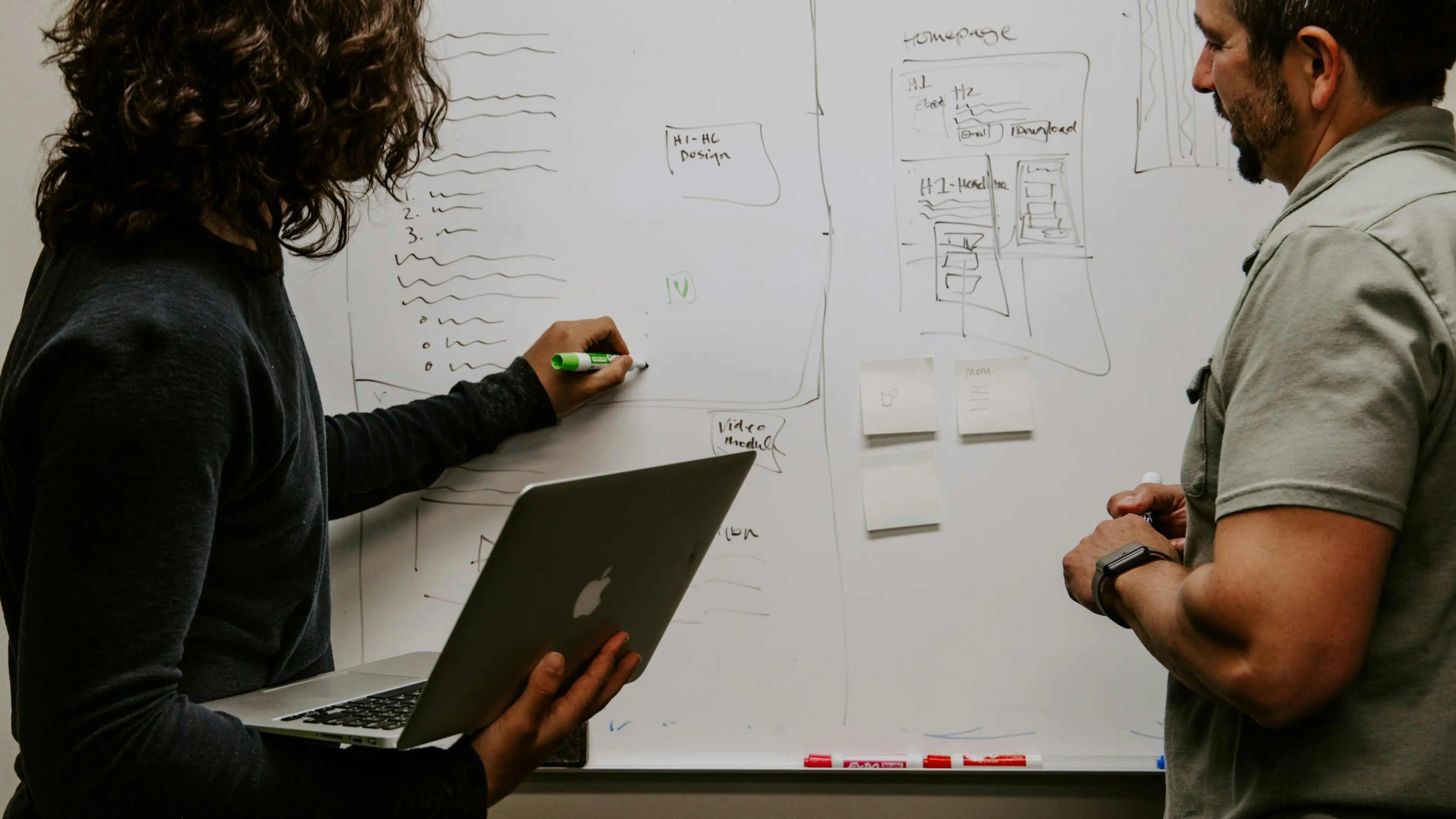1 July 2024 (updated: 1 July 2024)
How To Run Discovery Workshop: a Step-by-Step Guide
Chapters
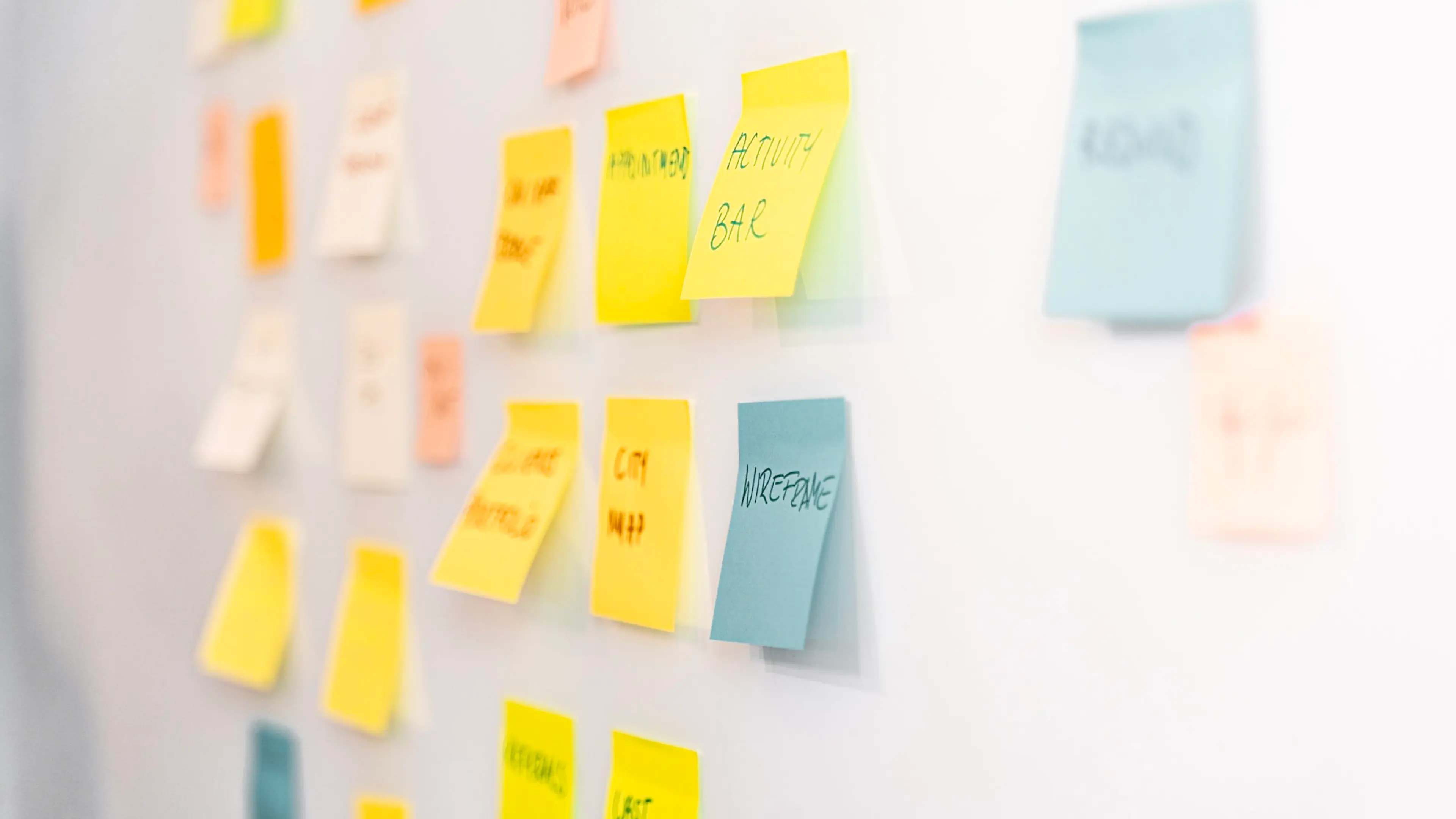
Running a discovery workshop can be a game-changer for teams who want to get aligned and streamline their project planning.
Whether you're new to this or have some experience, learning how to run a discovery workshop effectively is key to success. In this article, we’ll provide a clear, step-by-step approach to help you get started with confidence from prep to facilitating the discussions. Let's dive into the essentials of running an effective discovery workshop and understand how it fits into the overall discovery process.
Introduction to discovery workshops
Importance of discovery workshops
Product discovery workshop is essential for any project. They get the team aligned, understand the project scope, and identify key challenges early on. They provide a collaborative space for stakeholders to share their insights so everyone is on the same page. Opening up communication in discovery workshops can uncover hidden risks and opportunities that wouldn’t be seen in regular meetings. They also give team members a sense of ownership and commitment which is critical to the project’s success. A well-run discovery workshop can save time and money by setting direction and laying the foundation for the project.
Workshop participants
A good discovery workshop needs the right people. Ideally, this includes key stakeholders, project managers, team leads, and subject matter experts. They need to know the project goals and challenges so everything is covered. Stakeholders bring strategic thinking and long-term goals, project managers and team leads bring practical execution thinking, and subject matter experts bring specialized knowledge to help identify obstacles and solutions. A diverse group brings different perspectives and a more rounded understanding of the project. Keep the group small so you can have productive conversations and make decisions efficiently.

Successful discovery workshop: key objectives
The main objectives of a discovery workshop are to scope the project, identify risks, and align the team. One of the key objectives is to define a clear product vision that will inspire the team and align all stakeholders with the product's purpose. Firstly, by outlining the project goals and deliverables you ensure everyone knows what needs to be achieved. This prevents scope creep and keeps the team focused throughout the project.
Secondly, by identifying risks early you can develop mitigation strategies and smooth out the project journey. Another objective is to gather requirements from all stakeholders which gives a full view of the project needs. These workshops also aim to build collaboration and a cohesive team. Knowing how to run a discovery workshop means you achieve these objectives and set the project up for success.
Product discovery workshop: preparation
Defining goals and outcomes
Before the workshop starts you need to define goals and expected outcomes. This sets the tone for the whole session. Start by outlining the specific objectives you want to achieve, e.g., understand user needs, identify project requirements, or create a roadmap for implementation.
Clear goals keep participants focused and motivated. Determine the desired outcomes, e.g., a list of prioritized features or a risk assessment plan, so you have a target to work towards. Share these goals and outcomes with all participants beforehand so everyone arrives prepared and aligned. Defining these is a key part of learning how to run a discovery workshop as it sets the stage for productive and goal-oriented conversations.
Adding product discovery activities such as setting goals, defining value propositions, working on user journeys, and prioritizing product features will make the workshop even better. These activities will reduce costs, speed up delivery, align the team, improve product delivery, and meet user needs.
Gathering necessary materials
To make your discovery workshop run smoothly, gather all the necessary materials in advance. This includes any documents, charts, or data that will be referred to during the session. Make sure you have plenty of sticky notes, pens, and whiteboards for brainstorming and note-taking. Digital tools like project management software or collaborative platforms can be really useful for capturing ideas and organizing information in real-time. Prepare any presentation slides or handouts that will be used to guide the conversations and provide context.
Also, having a clear agenda and timeline helps keep the workshop on track and ensures all topics are covered. By gathering and organizing all the materials you can facilitate a more efficient workshop. Knowing how to run a discovery workshop includes having the right tools and resources. Adding in user research insights such as user journeys to your prep can make your product discovery process even more effective.
Setting the Discovery Workshop agenda
A structured agenda is key to keeping the discovery workshop focused and productive. Start by outlining the main topics and activities that need to be covered, such as introductions, goal setting, brainstorming sessions, and wrap-up discussions. Allocate time slots for each segment so that every topic gets enough time without the session running over time. Have short breaks to keep participants fresh and engaged.
Share the agenda with all attendees before the workshop so they know what to expect and can prepare any necessary inputs. Having a clear agenda helps with time management and keeps the workshop on track. Knowing how to run a discovery workshop involves planning it thoroughly and having a detailed agenda is a big part of that.
As part of the agenda, include a discovery session to bring key stakeholders and the development team together to generate workshop plans and outputs that align with company or project goals.

Running the discovery workshop
Facilitating effective discussions
Facilitating discussions is key to a successful discovery workshop. Start by setting ground rules to create a respectful and inclusive environment where everyone feels comfortable sharing their thoughts. Ask open-ended questions and prompt quieter participants to contribute. Use techniques like brainstorming, mind mapping, and SWOT analysis to stimulate discussion and get lots of ideas.
Keep the conversation focused on the workshop goals and outcomes and steer it back on track if it goes off-topic. Summarize key points regularly so everyone is aligned and understands what’s being achieved. Using visual aids like diagrams and charts can help clarify complex ideas and keep the discussion dynamic.
Knowing how to run a discovery workshop involves being able to guide discussions to get maximum input and drive toward actionable insights. Consider using user story mapping as a technique to outline the purpose and process of the activity, brainstorm all the work, and prioritize personas.
Encouraging participant engagement
Getting participants engaged is key to a productive discovery workshop. Start by creating an environment where everyone feels heard. Use icebreakers or introductory activities to get people relaxed and to know each other. Assign roles like note taker or timekeeper to keep everyone involved. Interactive activities like group discussions, role play, and hands-on exercises will make the workshop more fun. Ask open-ended questions to get people thinking deeper and to hear from everyone.
Acknowledge contributions positively to keep people motivated. Break down complex tasks into smaller chunks to keep focus and energy up. Providing regular breaks will help keep people refreshed and engaged. Running a discovery workshop effectively means knowing how to create an environment where everyone feels empowered to contribute.
The project team should choose activities that suit the team and have alternative activities to fill the product setup agenda.

Managing time effectively
Time management is key to a discovery workshop. Stick to your agenda and make sure each segment gets the right amount of time. Use a timer to keep track of discussions and transition to the next topic when needed.
Prioritize the key issues and be prepared to steer the conversation back on track if it goes off-topic. Provide breaks to keep people focused and energized. Remind people to keep their contributions concise. Summarize discussions regularly to keep things clear and make sure nothing gets missed. Leave some extra time at the end for wrap-up or any outstanding issues.
Running a discovery workshop means mastering time management so every minute is used productively and the workshop goals are achieved. Keeping the product discovery workshop focused by setting clear goals and desired outcomes is essential for results and deliverables.
Post-workshop activities
Analysing collected data
After the workshop, analyzing the data is the next step. Review all notes, recordings, and any materials generated during the session. Categorize the data into goals, challenges, requirements, and solutions. Look for common themes and patterns that emerged from the discussions. Use tools like mind maps or spreadsheets to visualize and sort the information. Prioritize the findings based on their relevance to the project goals and feasibility. Get feedback from key stakeholders on the priorities.
Summarize the data into a report that outlines the key takeaways, action items, and next steps. This report will be a reference for the team and ensure the insights from the workshop are turned into action plans.
Running a discovery workshop means not only facilitating it but also analyzing and using the data. Product discovery workshops should be used to expand understanding and influence decision-making based on the insights, not just validate existing ideas.
Creating actionable insights
Now you have the raw data from your discovery workshop, it’s time to turn it into actionable insights. Start by identifying the key findings from the analysis. Focus on those that align with the project goals and objectives. Turn these into clear actions by defining tasks, assigning responsibilities, and deadlines. Make sure each action item is achievable and measurable so you can track progress. Prioritize actions based on impact and feasibility and tackle the high-priority items first. Get your team to validate these insights and make sure everyone understands their role and responsibilities.
Document these actions in a report or project plan that everyone can refer to. Being able to distill the discussion into concrete steps that move the project forward is part of running a discovery workshop. Defining the target audience and user personas is key to designing and building the product.
Communicating results to stakeholders
Communicating the results of your discovery workshop to stakeholders is key to keeping everyone informed and aligned. Start by compiling a full report that summarizes the key findings, actionable insights, and next steps. Use plain language to present the information, and avoid technical jargon that will confuse non-technical stakeholders.
Include visual aids like charts, graphs, and diagrams to make the data more accessible and engaging. Schedule a follow-up meeting or presentation to go through the report in detail and let stakeholders ask questions and provide feedback. Explain how the insights will inform the project direction and highlight the benefits of the proposed actions.
Being able to run a discovery workshop effectively means the valuable information gathered is communicated clearly and efficiently and stakeholders buy into the project moving forward. A well-structured discovery workshop agenda is key to this communication, it guides the activities and keeps everyone aligned.
Tips for continued success
Iterating on feedback
Continuing to iterate on feedback is key to the long-term success of your project. After you’ve communicated the workshop results to stakeholders, actively seek their feedback on the findings and proposed actions. Use this feedback to refine and improve your approach so it aligns with stakeholder expectations and project goals.
Schedule regular check-ins and follow-up sessions to review progress and gather more feedback. Be open to changing your approach based on new insights or changing circumstances. Document any changes and communicate them to the team and stakeholders.
This feedback loop helps keep the project dynamic and on track. Being able to run a discovery workshop effectively means not just one event but an ongoing cycle of feedback and improvement, a culture of continuous learning and adaptation.
Regular follow-ups
Follow-ups are crucial to keep the momentum going and to ensure the insights and actions from the discovery workshop are implemented. Schedule regular meetings with your team and stakeholders to review progress, discuss any issues, and make adjustments.
These follow-ups are an opportunity to track the action items, hold people accountable, and keep everyone aligned to the project goals. Use these sessions to celebrate the wins and address any roadblocks that have arisen. Document the outcomes of each follow-up meeting to keep a record of progress and decisions.
Follow-ups also keep the communication and collaboration going, keeping the project dynamic and responsive to new information. Learning how to run a discovery workshop is also committing to ongoing follow-ups so the benefits of the workshop are realized throughout the project life cycle.
Maintaining momentum
Keeping the momentum after the discovery workshop is key to the project moving forward. Create a detailed action plan with clear deadlines and responsibilities to keep the team focused and committed. Review and update this plan regularly to reflect any changes or new insights.
Celebrate the milestones and wins to keep morale high and recognize the team’s efforts. Encourage open communication to address any issues or roadblocks that arise. Use project management tools to track progress and share with all stakeholders. Keeping the team engaged through regular updates and meetings keeps a sense of urgency and purpose.
Learning how to run a discovery workshop is also about sustaining the energy and commitment from the workshop to keep the project moving toward the goal.
Check out also:
- Workshops Are Rocket Fuel for Product Development - Leverage the power of collaboration to make strategy and design more efficient.
- How to Scale Your Product in — A Short Guide To Sustainable Scaling - See tips based on our 12+ years of experience in cooperation with scaleups.
You may also like

Native vs Cross-Platform App Development: Which is Right for Your Business
3 September 2024 • Maria Pradiuszyk


